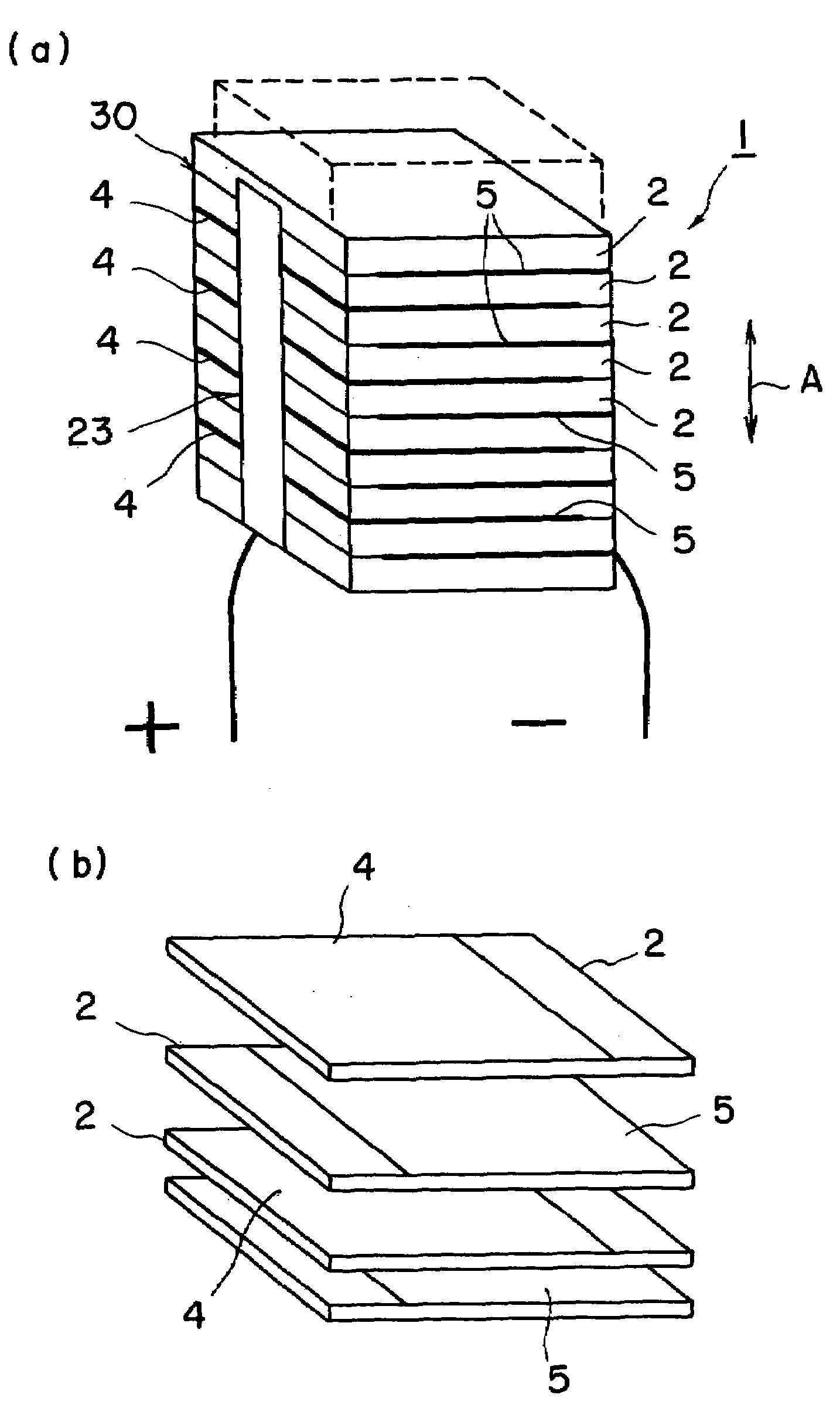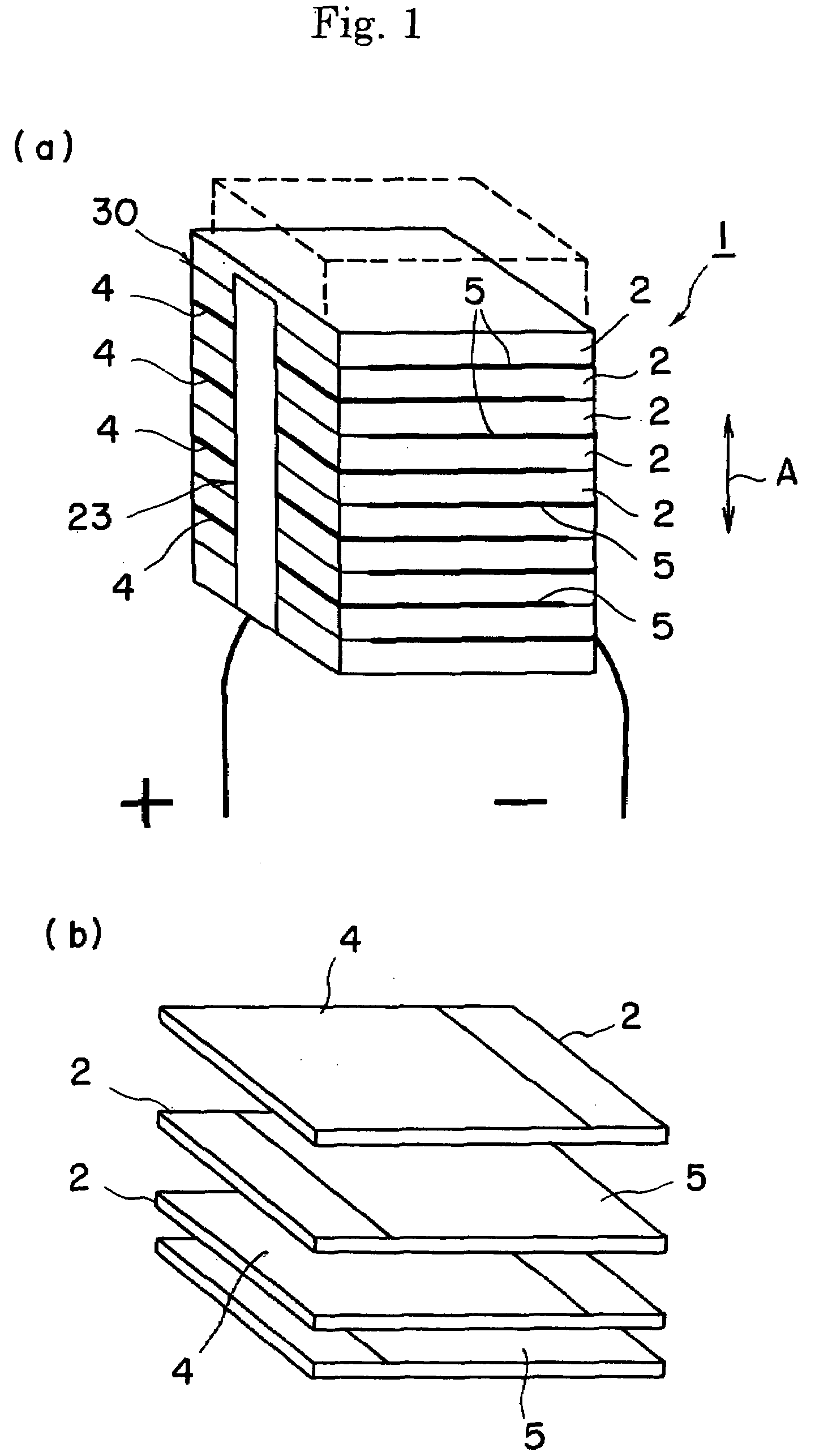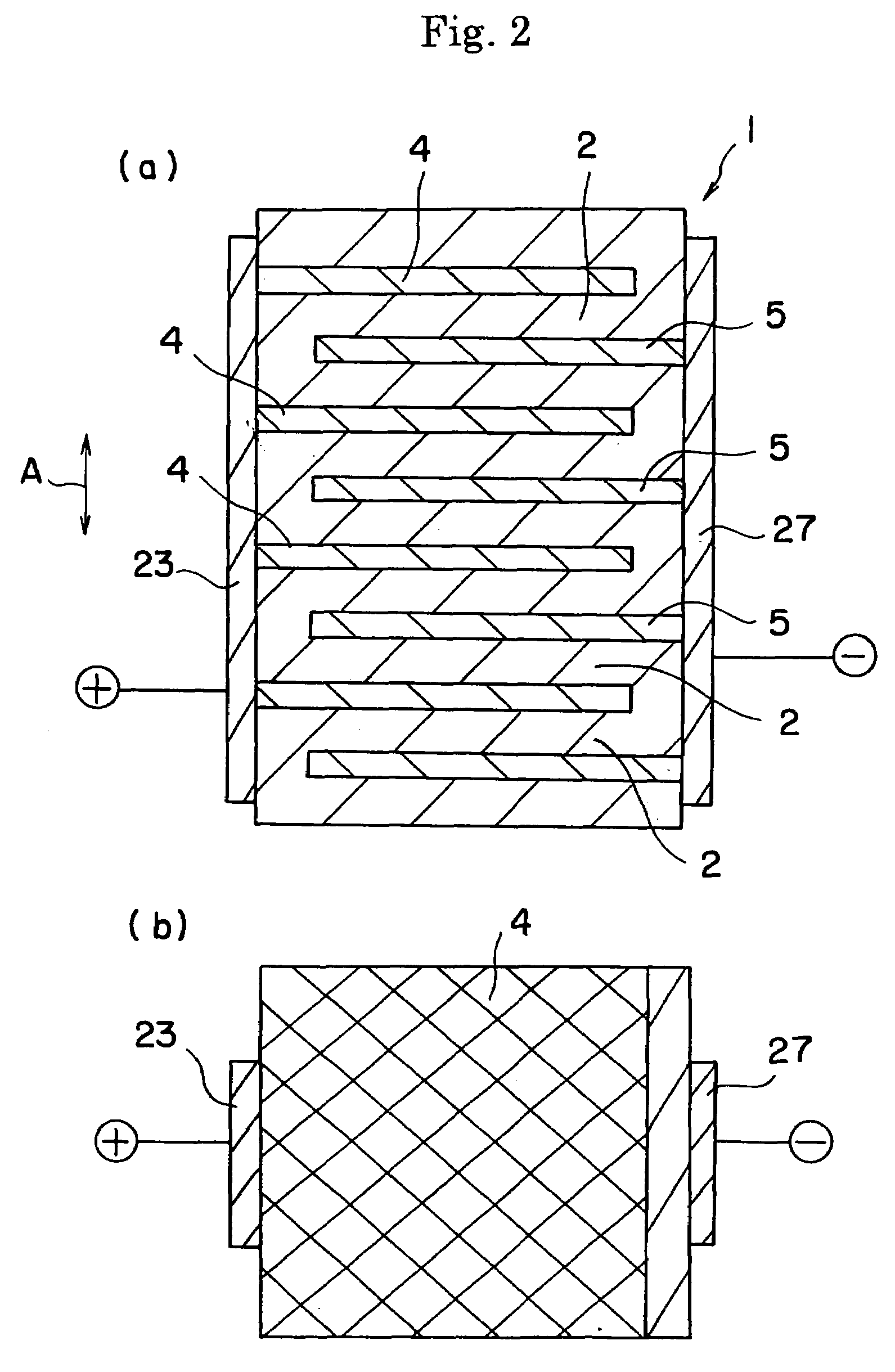Multilayer piezoelectric devices and method of producing same
- Summary
- Abstract
- Description
- Claims
- Application Information
AI Technical Summary
Benefits of technology
Problems solved by technology
Method used
Image
Examples
example 1
[0087]A device shown in FIGS. 1-3 was constructed. Specifically, 300-350 layers for constituting an active region and 50 layers each for constituting the upper or lower inactive regions were integrated by lamination. An internal electrode layer (e.g. 3 μm in thickness) was printed on each section of a piezoelectric tape and an adhesive layer (e.g. 5 μm in thickness) with an increased binder content as compared with the tape was printed thereon, and the layers were integrated by heating at 80° C. and weighting at 2 MPa.
[0088]The thus-integrated laminated molding was degreased at 600° C. and fired at 900-1100° C. to give a laminated piezoelectric ceramics body. This laminated body was cut and ground smooth to give a laminated body having a desired shape. The cross-section of the laminated body was 7 mm×7 mm in size and the length thereof was 35 mm. A underlying layer 3 to serve as an external electrode was formed on each of two sides of the device with offset electrode layers drawn ou...
PUM
 Login to View More
Login to View More Abstract
Description
Claims
Application Information
 Login to View More
Login to View More - R&D
- Intellectual Property
- Life Sciences
- Materials
- Tech Scout
- Unparalleled Data Quality
- Higher Quality Content
- 60% Fewer Hallucinations
Browse by: Latest US Patents, China's latest patents, Technical Efficacy Thesaurus, Application Domain, Technology Topic, Popular Technical Reports.
© 2025 PatSnap. All rights reserved.Legal|Privacy policy|Modern Slavery Act Transparency Statement|Sitemap|About US| Contact US: help@patsnap.com



